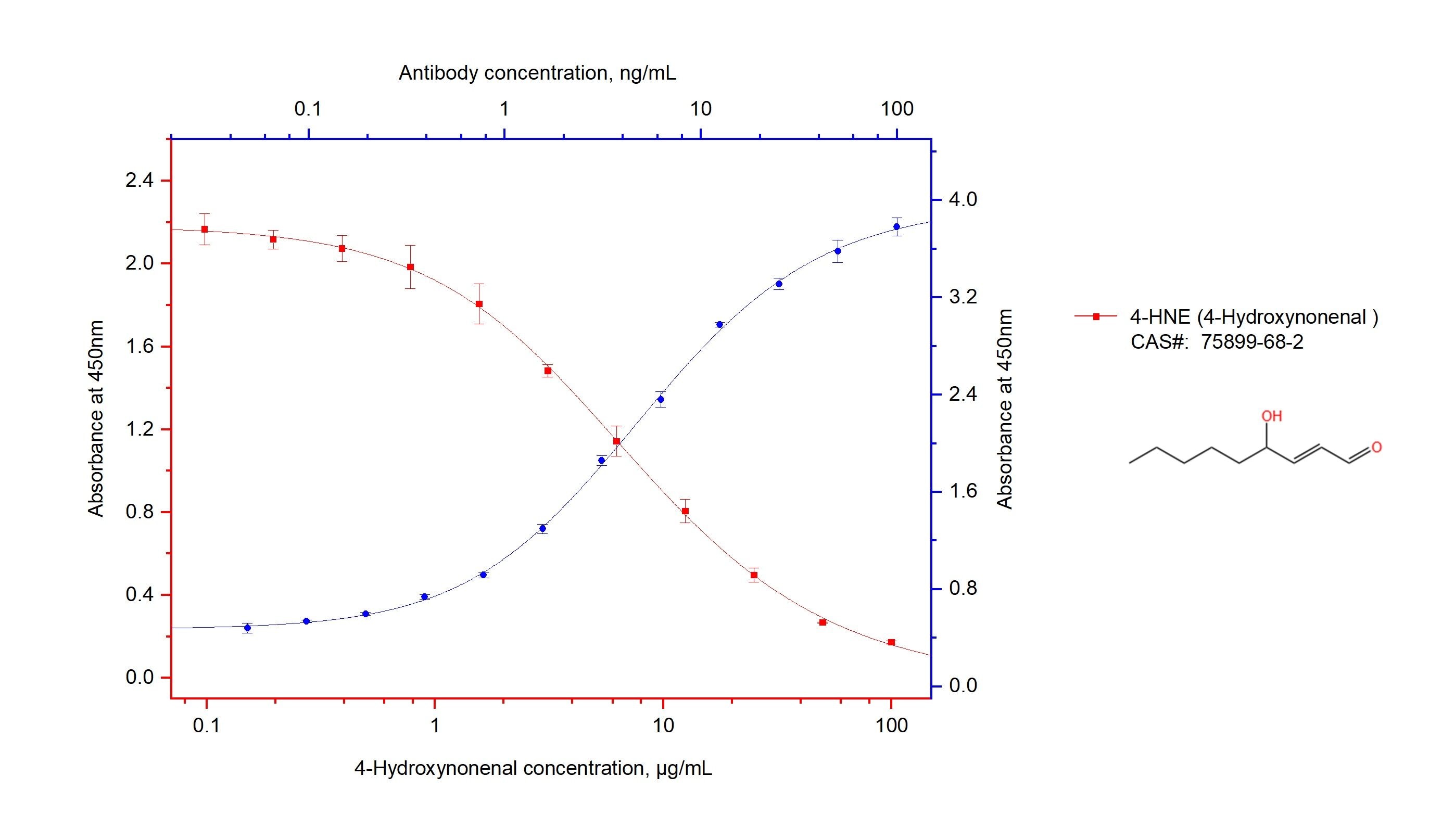4-Hydroxynonenal Monoklonaler Antikörper
4-Hydroxynonenal Monoklonal Antikörper für ELISA, Indirect ELISA
Wirt / Isotyp
Maus / IgG2a
Getestete Reaktivität
4-hydroxynonenal, chemical compound
Anwendung
ELISA, Indirect ELISA
Konjugation
Unkonjugiert
CloneNo.
2C1D10
Kat-Nr. : 68538-1-PBS
Synonyme
Geprüfte Anwendungen
Produktinformation
68538-1-PBS bindet in ELISA, Indirect ELISA 4-Hydroxynonenal und zeigt Reaktivität mit 4-hydroxynonenal, chemical compound
| Getestete Reaktivität | 4-hydroxynonenal, chemical compound |
| Wirt / Isotyp | Maus / IgG2a |
| Klonalität | Monoklonal |
| Typ | Antikörper |
| Immunogen | PTG |
| Vollständiger Name | 4-Hydroxynonenal |
| Gene symbol | |
| Gene ID (NCBI) | |
| Konjugation | Unkonjugiert |
| Form | Liquid |
| Reinigungsmethode | Protein-A-Reinigung |
| Lagerungspuffer | PBS only |
| Lagerungsbedingungen | Store at -80°C. 20ul Größen enthalten 0,1% BSA. |
Hintergrundinformationen
4-Hydroxynonenal is a uremic toxin. Uremic toxins can be subdivided into three major groups based upon their chemical and physical characteristics: 1) small, water-soluble, non-protein-bound compounds, such as urea; 2) small, lipid-soluble and/or protein-bound compounds, such as the phenols and 3) larger so-called middle-molecules, such as beta2-microglobulin. 4-Hydroxynonenal (4-HNE) is a major aldehydic product of ω-6-unsaturated fatty acid peroxidation. It is considered a lipid peroxidation specific marker. 4-HNE has been found to induce differentiation and inhibit proliferation of HL-60 human leukemic cells. It has also been found to induce murine alveolar macrophage cell death. 4-HNE has been shown to inhibit State 3 respiration, causing a transient cytosolic Ca2+ increase. In addition, it irreversibly inhibits Na+-K+-ATPase activity.



